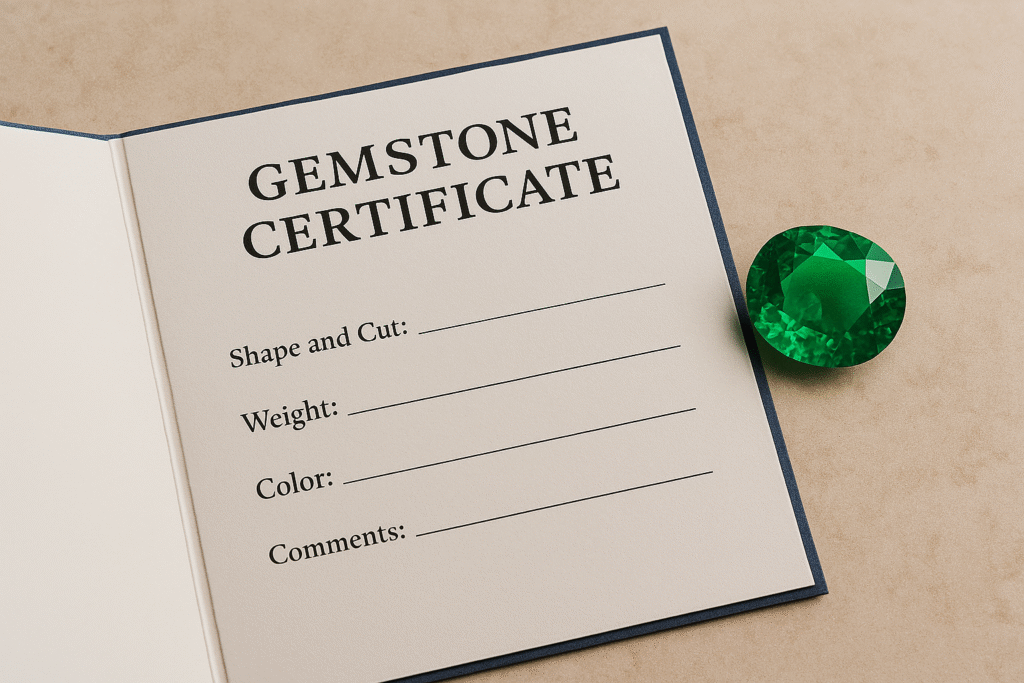Learn when a gemstone certificate from labs like GIA, AGL, IGI, GII, SSEF, or Gübelin adds value—and when it’s unnecessary. Discover what lab reports reveal, what they miss, and how to decide if you should invest in one.
A gemstone certificate can be a smart investment.
It can also be a waste of money.
The difference lies in knowing what reports actually give you—and what they don’t.
What a Gemstone Certificate Tells You
A lab report from a recognized authority like GIA, AGL, IGI, GII, SSEF, or Gübelin provides:
- Identity – Confirms if the stone is natural, synthetic, or imitation.
- Treatment Disclosure – Lists enhancements such as heating, fracture filling, or dyeing.
- Basic Details – Records weight, dimensions, cut, and color description.
- Origin (sometimes) – Certain labs, like SSEF or Gübelin, may give country-of-origin analysis.
What It Doesn’t Tell You
A certificate won’t guarantee beauty or market value.
It won’t say if the color excites you in real life.
It won’t reveal future resale prices.
It won’t replace your own judgment.
Ask yourself: would you buy art based only on a written description?
Which Stones Deserve a Report
Not every gem needs certification. Spending wisely is part of being a smart buyer.
Reports are most valuable for:
- High-value gems – Rubies, sapphires, emeralds, and rare spinels.
- Diamonds – Especially those above 0.50 carats.
- Unusual stones – Where treatment or origin greatly affects value.
For small or inexpensive stones, a certificate can cost more than the gem itself.
Choosing the Right Lab
Reputation matters.
Buyers worldwide respect certificates from:
- GIA – Known for diamond grading.
- AGL – Trusted for colored stones.
- IGI – Popular for diamonds and jewelry reports.
- GII – Widely used in India.
- SSEF and Gübelin – Premier European labs for rare, high-end stones.
Ask yourself: who will believe this report if you ever resell the stone?
A Practical Approach
- Use reports as a tool, not a crutch.
- Focus on whether the stone appeals to you, not just the paper.
- Spend on certification only when it adds clarity or supports value.
A certificate is not the gem.
It is a snapshot of facts.
The real decision rests with your eyes, your taste, and your budget.



